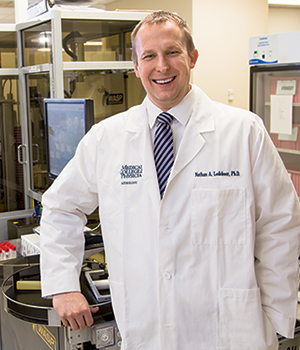Anne Paxton
January 2014—Sleek specimen processing instruments, often with sophisticated robotics, are features of many larger microbiology laboratories, despite the longstanding belief that microbiology is too complex to automate. But total laboratory automation (TLA) has not yet gained a foothold in the U.S., even though there are several installations in microbiology laboratories in Europe. Could 2014 be the year that total microbiology laboratory automation comes into its own?

Dr. Nathan Ledeboer of Dynacare, which has plans to acquire new microbiology automation and “may be one of the first,” he says, “to have total automation in the U.S.”
Microbiology TLA includes not just instruments that perform specimen processing, but also conveyor or track systems to move plates to and from incubators, digital cameras to capture plate images, automated incubators with digital reading stations, and proprietary software to manage these processes. Three major systems are on the market: the bioMérieux Full Microbiology Laboratory Automation (FMLA), Copan Diagnostics’ WASPLab, and BD Kiestra TLA. “These total laboratory automation systems are remarkable innovations for a laboratory that has been essentially manual for 100 years,” says Richard B. Thomson Jr., PhD, division head of clinical pathology and director of microbiology laboratories for NorthShore University Health System in Chicago’s northern suburbs. “But they are really just making inroads, and nobody has completed an installation yet in the United States.”
 CAP TODAY Pathology/Laboratory Medicine/Laboratory Management
CAP TODAY Pathology/Laboratory Medicine/Laboratory Management
